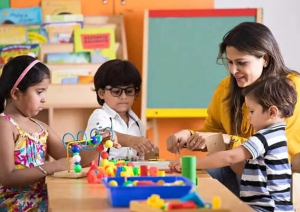A day in the life of a child with ADHD
Imagine trying to focus on a single task while your mind constantly races, making it feel nearly impossible to stay on track. For a child with ADHD, this is everyday life. ADHD, or Attention-Deficit/Hyperactivity Disorder, affects millions of children worldwide, and each day presents unique challenges and triumphs. As a parent, caregiver, or teacher, understanding these daily experiences can foster empathy and provide better support for these remarkable children.
Living with a child with ADHD can be an emotional journey.
Their boundless energy and creativity are both inspiring and exhausting. You might find yourself caught between admiration for their zest for life and concern for their struggles with focus and impulse control. The heart of this journey lies in recognizing that a kid with ADHD doesn’t need to be “fixed”, they need to be understood, supported, and celebrated for who they are. As the renowned ADHD expert Dr. Edward Hallowell says, “The key to raising a happy, successful child with ADHD is to focus on their strengths, not their weaknesses.”
Morning Routine: A Whirlwind Start

The day begins early for a child with ADHD. Morning routines can be particularly challenging, as transitioning from sleep to the structured environment of school demands a level of focus that can be elusive. Simple tasks like getting dressed, brushing teeth, and packing a school bag often require repeated reminders. The clock ticks away, adding a sense of urgency.
Despite these struggles, there are moments of joy and spontaneity. Your child might suddenly decide to share an imaginative story or get lost in a book they’re fascinated by. Embrace these moments, they reveal the vibrant world inside their mind. Establishing a consistent morning routine with visual schedules and gentle, encouraging prompts can help ease the chaos.
School: Navigating Structure and Distraction

School presents a complex mix of opportunities and challenges for a child with ADHD. The structured environment can feel confining, but it’s also where they learn to navigate social dynamics and academic expectations.
In the classroom, staying focused on lessons can be tough. A child with ADHD might fidget, doodle, or daydream. They might blurt out answers without raising their hand or struggle to stay seated. These behaviors often draw unwanted attention and can lead to feelings of frustration or inadequacy.
However, it’s important to recognize that ADHD often comes with unique strengths. Children with ADHD are often creative, intuitive, and capable of hyper-focus on tasks they find truly engaging. Teachers who understand this can create a more inclusive classroom environment by offering varied activities and incorporating movement breaks. As Dr. Russell Barkley, a clinical psychologist and ADHD specialist, states, “The most important thing is to understand ADHD as a performance deficit, not an ability deficit.”
Afternoon: Balancing Homework and Play

After school, the balance between homework and playtime can be delicate. Homework requires sustained attention and can quickly become a battleground. Break assignments into smaller, manageable chunks, and incorporate short breaks to keep your child from becoming overwhelmed.
Physical activity is crucial for a kid with ADHD. It helps them burn off excess energy and improve focus. Encourage outdoor play, sports, or any physical activity they enjoy. This not only helps with managing ADHD symptoms but also boosts their mood and overall well-being.
Engaging in creative activities is another way to channel their energy positively. Drawing, building with blocks, or playing a musical instrument can provide an outlet for their creativity and help improve concentration.
Evening: Winding Down

Evening routines are essential for helping your child wind down and prepare for bed. A consistent routine that includes calming activities like reading, listening to soothing music, or practicing mindfulness can make a significant difference. Limit screen time before bed, as it can interfere with sleep quality.
Bedtime might still be a challenge, with your child’s mind buzzing with thoughts and ideas. Patience and a comforting presence are key. Sometimes, a weighted blanket or a gentle backrub can provide the sensory input needed to relax.
Embracing the Journey

Living with ADHD is not without its challenges, but it’s also filled with moments of joy, creativity, and deep connection. Celebrate your child’s unique strengths and be their unwavering advocate. Understand that their journey is different, not less.
By fostering an environment of understanding and support, you help your child with ADHD thrive. They have the potential to achieve great things, often in ways that are wonderfully unexpected. Embrace the whirlwind, cherish the breakthroughs, and always remember that your love and support are the most crucial elements in their journey.
Conclusion
A day in the life of a child with ADHD is a blend of challenges and triumphs. Understanding their unique experiences helps us provide the support they need to flourish. Remember, your child’s ADHD does not define them, it’s just one part of their vibrant, multifaceted self. With patience, empathy, and positive reinforcement, you can help your child navigate their world with confidence and joy.